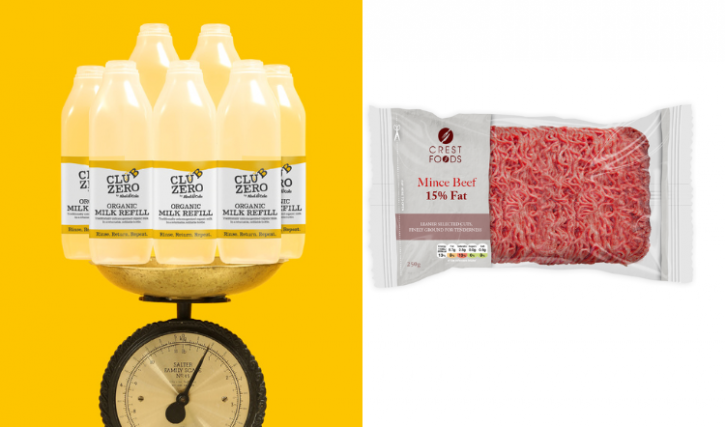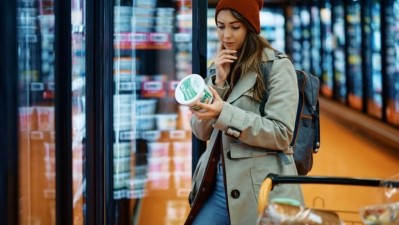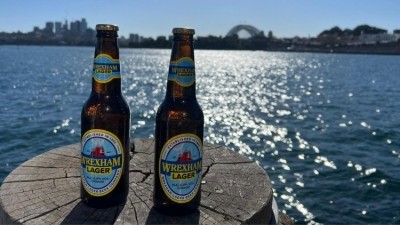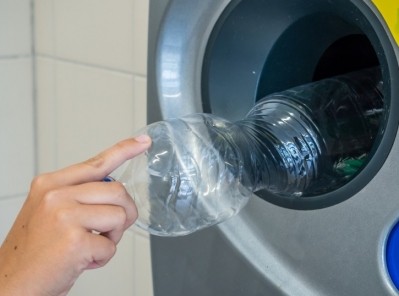News
Food and drink packaging innovations: Round-up

Refillable plastic milk bottles could significantly reduce greenhouse gas emissions compared to their glass counterparts, according to online retailer Abel & Cole.
Packaging provider Berry Global Group has partnered with the retailer to supply new polypropylene bottles for its Club Zero Refillable Milk delivery service that can be be refilled 16 times before being recycled.
According to Abel & Cole, reusing the Club Zero Refillable Milk bottles just four times reduces the carbon footprint of their single-use milk bottles compared to heavier glass bottles. It would take a glass bottle 15 returns to reach similar emissions savings.
It also claimed the concept would save 450,000 single use plastic milk bottles from landfills or incineration per year, equivalent to 23 tonnes of plastic.
Is plastic the enemy?
Hugo Lynch, sustainability lead as Abel & Cole, said: “When it comes to packaging materials, plastic is often seen as the enemy. But we challenged ourselves to ask if it was better to use glass, which is heavier and more energy-intensive to make, or to go against the grain.”
Designed to support Abel & Cole’s eight-stage cleaning process, the producer can ensure the bottles are thoroughly cleaned before being conveyed to the cleanroom for refilling. The new bottles were designed without a handle, reducing ‘trap points’ where bacteria might gather and allow for easy drainage.
Further, the bottle was reverse-engineered to fit the existing low density polyethylene cap used for Abel & Cole milk bottles, helping to reduce costs and eliminating the need for new equipment investments.
Consumer returns
The bottle label contains extensive consumer communication to encourage returns, while the label itself also provides an ‘early warning’ system for each bottle’s end of life – bottles can be washed up to 16 times before the label shows signs of degradation, meaning that Abel & Cole can track bottle life and ‘retire’ each bottle when it is ready for recycling.
Sue Springett, senior marketing manager for Berry Agile Solutions, added. “We are committed to delivering innovative, reusable packaging solutions that help our customers make transformative leaps toward their sustainability goals. Through circular partnerships like these, we unpack complexities and help our customers understand what’s possible for the plastic substrate.”
The first samples were 3D printed for migration testing in June 2023, and the first bottles shipped to customers in October. Since launch, the one litre Club Zero Refillable Milk bottle has seen a 20% uplift in sales week-on-week. The current return rate is 64%, with Abel & Cole targeting a minimum of 75%.
High-barrier, printable laminates
In other packaging news, Sealed Air (SEE) has developed a new range of high-barrier, printable laminates to help food processors use less plastic in packaging, improve recyclability and reduce total packaging costs.
Cryovac Brand Recycle-Ready PP-Based Laminates have a thickness of 52 microns and are fortified with an ethylene vinyl alcohol (EVOH) barrier.
This construction delivers a ‘superior’ oxygen and moisture barrier to keep food fresh and extend shelf life, while using between 65% to 77% less plastic compared to traditional tray lidding and thermoforming options, according to SEE.
This new laminate is recycle-ready, printable and complies with on-pack recycling label (OPRL) guidelines and Circular Economy for Flexible Packaging (CEFLEX) standards – certified as 90% recyclability by Cyclos and can be recycled in polypropylene streams, depending on local recycling facility capabilities.
Marta Lara, senior marketing manager for food retail, EMEA at SEE, said: “Our aim was to create a high-barrier laminate packaging solution that is easily printable, while supporting food processors’ goals to improve sustainability and reduce costs.
'Lower total packaging costs'
“SEE analysis of market prices for other thermoforming and tray lidding options – compared to the Cryovac laminates – shows the new recycle-ready solution can lower total packaging costs by 50% to 75%.”
Cryovac Laminates have been designed for horizontal fill form seal (HFFS), tray lidding and thermoforming applications, ideal for packaging minced meat, fresh red meat, poultry, smoked and processed meats, dairy and cheeses. The laminates are available in both plain and printed formats and anti-fog and non-anti-fog versions.
“Innovations in food packaging mean that food processors don’t have to choose between performance, cost savings and sustainability,” Lara added. “Technology and expertise are constantly evolving to develop food packaging solutions that improve efficiencies, productivity, safety and quality, and circularity.”
Non-shrinkable-film field tests of the Cryovac Laminates with SEE customers on high-speed HFFS systems recorded packaging speeds of up to 120 packs per minute (ppm) and sealing temperatures up 185°C. Tests of shrinkable film applications showed packaging speeds of up to 80ppm and sealing temperatures reaching 165°C.
Meanwhile, Verallia has launched lightweight glass spirit bottles as part of its new product range, Ecova.

















